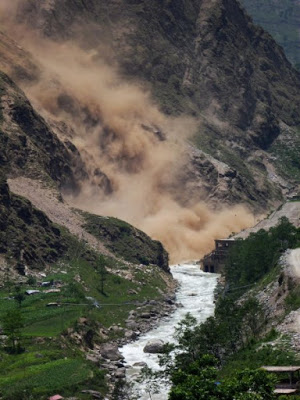
In the last few months, it has once more become clear that large earthquakes can solicit catastrophic landsliding. In the wake of the Nepal earthquake, the landslide community has been warning of persistent and damaging mass wasting due to monsoon rainfall in the epicentral area. However, very little is actually known about the legacy of earthquakes on steep, unstable hillslopes.
Using a dense time series of satellite images and air photos, Odin Marc and colleague reconstructed the history of landsliding in four mountain areas hit by large, shallow earthquakes. Their reconstructions show that the rate of landsliding caused by rainfall is systematically elevated after an earthquake, up to 20-fold, and then recovers over a period of months to years.
The magnitude of this response and the duration of the recovery phase are possibly related to the size of the earthquake. Ruling out other mechanisms, Marc and colleagues found evidence suggesting that heightened landslide rates and their gradual decrease are due to shaking-induced damage of rocks very near Earth’s surface and active healing processes.
These findings show that in mountain areas intensely shaken by large earthquakes, people should reckon with higher than normal landslide risks during the recovery and rebuilding phase. This risk can be anticipated and monitored and rates of mass wasting are likely to return to pre-earthquake levels eventually.
Reference:
O. Marc, N. Hovius, P. Meunier, T. Uchida, S. Hayashi. Transient changes of landslide rates after earthquakes. Geology, 2015; G36961.1 DOI: 10.1130/G36961.1
Note: The above post is reprinted from materials provided by Geological Society of America.










